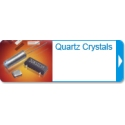Electronic Oscillators
Electronic oscillators exist when an electrical circuit produces a periodic electrical signal based on changes in the energy supply. It converts direct current from the power supply into alternative current and if they produce high-power AC output from a DC supply, they are called inverters. There are many types of electronic oscillators but all employ a sensitive amplifier whose output is fed back to the input in phase; this works as signal regeneration and sustains itself (also known as positive feedback). The first group of oscillators are called linear or harmonic oscillators. They can be further divided into feedback, which act like transistors, and negative resistance whose high frequencies are in the microwave range. The other group are non-linear or relaxation oscillators and include ring oscillators and delay line oscillators. Electronic oscillators are used in AM radio transmitters which create carrier waves for the station but also receivers, connected to an antenna, which are resonators to tune in. In computers, a special oscillator called a clock serves as a pacemaker for the microprocessor and determines the rate at which the computer can perform instructions. They are also found in quartz clocks, metal detectors, stun guns as well as the sounds produced by electronic beepers.
-
Euroquartz Ltd
Euroquartz is an independent company which designs , manufactures and supplies quartz crystals, resonators, oscillators, VCXOs, TCXOs, OCXOs, filters and timing modules.View company profile
UK-based, on-site design and manufacture ensures short leadtimes and low costs. Quality assurance to ISO 9001 (2000 revision) ensures customers world-wide of reliable and consistent supply of high quality components.
We offer a full and comprehensive technical sales and design in service based on our many years of experience in the crystal oscillator market.

